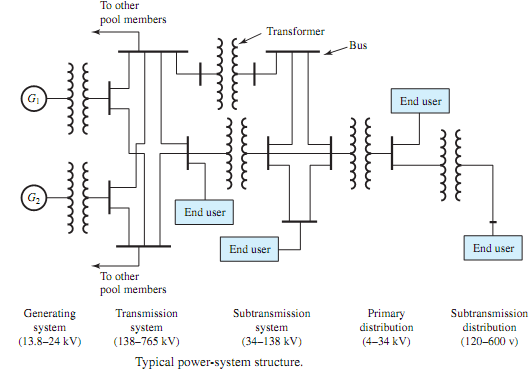Q. Show Process of Power transmission and distribution?
The structure of a power system can be divided into generation (G), transmission, (T), and distribution (D) facilities, as shown in Figure. An ac three-phase generating systemprovides the electric energy; this energy is transported over a transmission network, designed to carry power at high or extrahigh voltages over long distances from generators to bulk power substations and major load points; the subtransmission network is a medium to high-voltage network whose purpose is to transport power over shorter distances from bulk power substations to distribution substations. The transmission and subtransmission systems are meshed networks with multiple- path structure so thatmore than one path exists fromone point to another to increase the reliability of the transmission system.
The transmission system, in general, consists of overhead transmission lines (on transmission towers), transformers to step up or step down voltage levels, substations, and various protective devices such as circuit breakers, relays, and communication and control mechanisms.
Figure shows a typical electric-power distribution system and its components. Be- low the subtransmission level, starting with the distribution substation, the distribution system usually consists of distribution transformers, primary distribution lines or main feeders, lateral feeders, distribution transformers, secondary distribution circuits, and customers' connections with metering. Depending on the size of their power demand, customers may be connected to the transmission system, the subtransmission system, or the primary or secondary distribution circuit.
